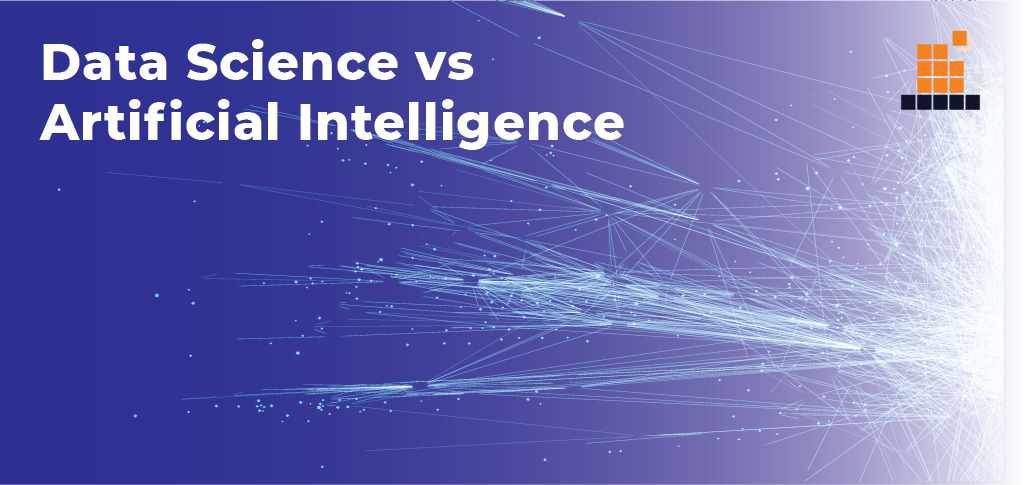Data Science and Artificial Intelligence are the two most significant technologies around the globe right now. Data science uses Artificial Intelligence to a great extent in its operations. However, it doesn’t completely represent Artificial Intelligence. We commonly use both technologies interchangeably. Data science contributes to a few aspects of Artificial Intelligence but it doesn’t reflect all of it. Real AI is far from reachable. People usually consider contemporary data science as AI but it is not the case. So, let us explore and understand both of these terms to avoid all the confusion.
Understanding AI and data science
Artificial is a perception with a large margin that recognizes patterns and unsupervised data with the help of logical discrimination and algorithm development. It mainly does so to understand robotic technology’s neural network. Besides, it uses the algorithms to perform certain autonomous tasks similar to the ones that were successfully performed in the past. Nowadays, many big companies like Google and Facebook are making use of Artificial Intelligence for developing autonomous systems.
Now, talking about data science, it is an idea to bring together information, investigations, measurements, and their related strategies to understand and analyze the wonders with data. Data science uses the systems and theories that are drawn from innumerable fields inside the regions of software engineering, computational science, machine learning, etc. We all have become a part of this data-driven society and this data has become crucial for organizations and industries to make smart and careful decisions. There are six different needs in data science which are as follows:
- First need: Deep learning and AI
- Second need: Simple ML algorithms, A/B testing, and experimentations
- Third need: Aggregates, training data, features, analytics, segments, and metrics
- Fourth need: Prep, cleaning, and anomaly detection
- Fifth need: Data pipelines, infrastructure, and structured and unstructured data storage
- Sixth need: User-generated content, logging, external data, sensors, and instrumentation
What makes data science and AI different from each other?
Let us understand this with the help of the below-mentioned points –
- Constraints of contemporary AI: As mentioned above, both of these technologies can be used interchangeably. However, there are a lot of differences between them. The AI used nowadays is the ‘artificial narrow intelligence’. This means that computers and systems don’t have full consciousness and autonomy like us human beings. They only perform the actions and tasks for which we program them for.
- Data science – a comprehensive procedure: Data science is the analysis, visualization, and study of data for gaining meaningful insights from it. This data is responsible for benefitting companies. The roles and responsibilities of a data scientist include preprocessing the data and cleaning and transforming it. After that, the data scientist analyzes the patterns and draws graphs that underline analytical procedures using the visualization techniques. Then, they develop prediction models to find the likelihood of the occurrence of future events.
- Artificial Intelligence – a tool for data scientists: AI is a tool for data scientists. The data science hierarchy of needs involves collecting the data, moving/storing it, exploring/transforming, aggregating/labeling and lastly, learning/optimizing, and finding patterns in it. Companies look for AI positions such as machine learning engineers, deep learning scientists, etc for developing products based on AI. They require data scientist tools such as python and R language for performing operations but they also need some CS expertise. Data scientists, whereas, help the companies make data-driven decisions. He extracts data using SQL queries, cleans anomalies in data, analyzes the patterns, and then applies predictive models to generate insights. Moreover, he also uses AI tools such as Deep Learning algorithms for performing prediction and classification of various types of data.
Key differences between data science and AI
- Scope – We use data science in different underlying operations whereas artificial intelligence limits only to the ML algorithms.
- Type of data – Data science has several data types such as structured, unstructured, and semi-structured. On the other hand, AI has the kind of data that is standardized in the form of embeddings and vectors.
- Tools – The tools used in data science are SAS, R, python, etc whereas the tools used in AI are Kaffe, Mahout, TensorFlow, etc.
- Applications – We use data science applications widely in search engines such as Google, Yahoo, and the marketing field, banking, etc. We use artificial intelligence in several sectors such as robotics, manufacturing, healthcare, transport, and other industries.
- Process – Data science uses the process of analysis, prediction, and visualization whereas artificial intelligence forecasts future events using a predictive model.
- Techniques – Data science involves different methods of statistics. On the other hand, AI uses algorithms in computers for solving problems.
- Purpose – Both technologies have different primary goals. Data science finds patterns that are hidden in the data. Artificial Intelligence automates the process and brings autonomy to the products and to the model of data which proves that both of them have different goals and purposes.
- Different models – We construct models for producing the insights that are important for decision making in data science whereas, in artificial intelligence, we build models that have understanding and cognition similar to humans.
- Degree of scientific processing – Data science uses less scientific processing. On the other hand, artificial intelligence uses a very high degree of scientific processing.
Summary
In this article, we understood the difference between the technologies. Artificial Intelligence is a domain that is yet to be completely explored. Data science has already started making a huge difference in the market. It uses Artificial Intelligence to generate predictions and transforming the data for visualizations and analysis. In the end, we can conclude that data science analyzes the data for better decision-making whereas artificial intelligence is a tool for creating better products and imparting those products with autonomy.
